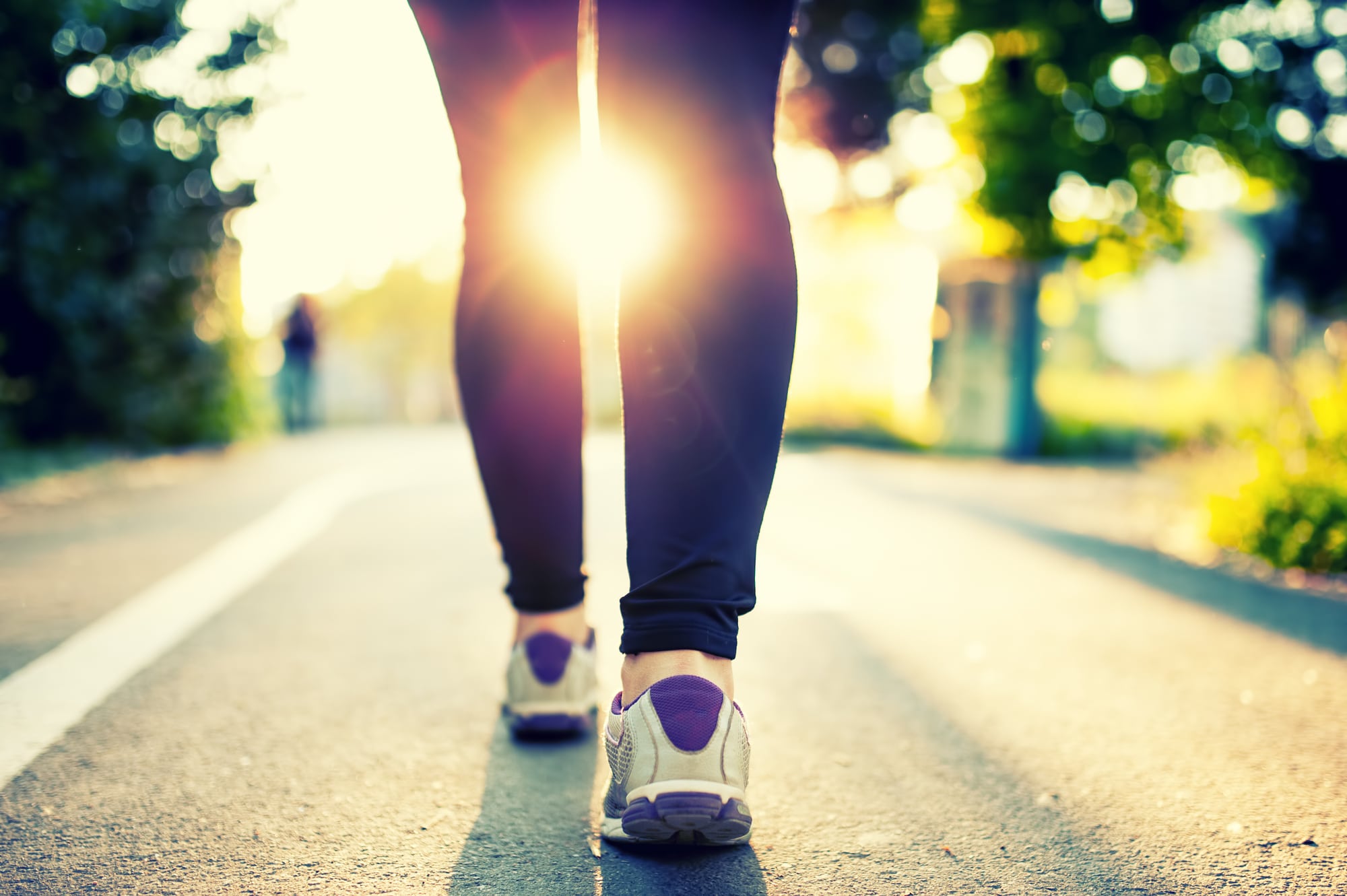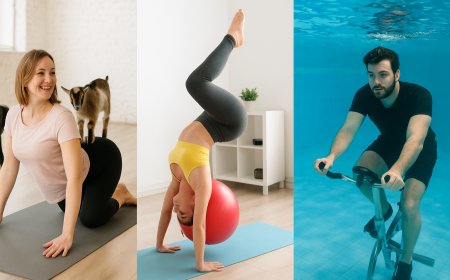How Many Steps Do You Really Need A Day To Lose Weight?
Are you wondering how many steps a day you need to lose weight? Have you set a goal to walk 10,000 steps a day? You’ve probably heard from fitness pros and even your doctor that walking 10,000 steps per day will keep your heart healthy, help you lose weight, and boost your fitness level. And it’s true: walking 10,000 […]

Are you wondering how many steps a day you need to lose weight? Have you set a goal to walk 10,000 steps a day? You’ve probably heard from fitness pros and even your doctor that walking 10,000 steps per day will keep your heart healthy, help you lose weight, and boost your fitness level. And it’s true: walking 10,000 steps per day is a good amount to strive for in order to stay healthy.
But when it comes to actually losing weight from walking, there are other factors involved.
- Are you consistently moving throughout the day or just crashing on the couch after those 10,000 steps are reached?
- How fast are you walking, and at what intensity?
It turns out that speed, intensity, and consistency actually matter more than just a number of you’re serious about weight loss.
Let’s explore where the idea of 10,000 steps came from and the other factors you may need to consider if you really want to change your body.
Why 10,000 Steps a Day?

10,000 steps isn’t a magical number. In fact, its origins date back to a 1960s marketing campaign (sigh…doesn’t everything?)
Shortly after the 1964 Tokyo, Olympic games (and partially because of excitement generated by the events) consumers in Japan started snatching up a pedometer called the manpo meter.
The word “manpo” translates to 10,000 steps. Japanese fitness enthusiasts began to count their daily 10,000 steps to boost their health.
In recent years (and since the rise of Fitbits and other wearable activity trackers) researchers have studied that recommendation and found that indeed, walking 10,000 steps a day can boost heart health and improve overall wellness—with two caveats.
Firstly, since not everyone is a walker, most health experts and organizations (like the American Heart Association) have now expanded the recommendation to simply ask that you participate in 150 minutes of moderate exercise per week, whether it’s walking, swimming, elliptical, or another form of cardiovascular exercise.
Secondly, if serious weight loss is your goal, don’t confuse the steps recommendation with a serious weight loss program.
While getting in your steps is important, the speed and intensity with which you move will matter more than a particular number when weight loss is your goal.
What Matters More Than Steps In Your Walking Program If You Want To Lose Weight

When you start a walking program, you should first focus on building a consistent program to just get in the habit of walking. If you’re currently sedentary, start your program by trying to walk for 15-20 minutes most days of the week.
Gradually build upon that until you are walking almost every day. Then slowly add minutes to your session until you are walking for 30-40 minutes on most days.
Once you’ve got a regular walking program in place, add these three challenges to make your walking program especially effective. By incorporating these three factors into your walks, you’ll lose weight, tone up, and start to see real changes in your body.
1. Speed

There has been scientific evidence to suggest that people who walk at a brisk pace live longer than those who walk at a more leisurely pace (slower than a 24-minute mile). While we don’t know for certain that walking faster makes you live longer, it’s a great incentive to challenge yourself and burn a few extra calories.
If you don’t have a fitness tracker that displays walking speed, you can check your pace manually. See how long it takes to walk a course and challenge yourself to decrease the time by thirty seconds, then one minute, then two minutes.
2. Hills

If you’re walking outdoors, try to find some hills in your neighborhood to work with; even a slight incline is fine to start with. If you’re stuck inside on a treadmill, use technology to make your workout more effective.
Set the speed to a comfortable walking pace, then add an incline to make the workout harder. A 135-lb woman who burns 310 calories walking on a level surface will burn an extra 70 calories by adding a 7% incline.
3. Intervals

Studies have shown that brisk walking intervals are a more effective way to burn calories, so don’t be afraid to mix up your pace every few minutes or so, alternating from a brisk pace to a full-out power walk and back again.
One study conducted at Ohio State University found that walkers who varied their pace burned 20 percent more calories than those who walked at a steady pace.
Lastly, if your goal is weight loss, try to set a steps-per-day goal that is independent of exercise. For example, if you set a goal to walk 10,000 steps per day, you might reach that goal with an early morning jog. But that doesn’t mean you should sit on the couch for the rest of the day.
Reaching that 10,000 steps marker is not an excuse to be sedentary for the rest of the day. You should incorporate movement into your entire day if you want to live longer, lose weight, and get in shape.
So How Many Steps A Day You Need to Lose Weight?

As for weight loss, the number of steps matters along with the other factors we mentioned like intensity and consistency.
As a general rule, aim for 10,00 steps a day but be sure to enjoy yourself in the process! Set a step goal that feels doable and move up from there.
Bhe truth is, walking is one of the most beneficial mind-body activities you can do. Whether you get 1,000 or 20,000 steps in a day – if you’re walking, you’re moving toward better health.
Power Walking For Beginners

With countless studies proving the effectiveness of power walking in benefitting your health, learning how to power walk will keep you moving well into your future as you age. Power walking is one of the most maintainable workouts a person can add to their life so if you haven’t pursued the world of power walking
3 Walking Workouts For Weight Loss

If you want to start working out or simply get back in shape after taking a break from exercise, there’s no better—or more convenient—form of exercise than walking. Walking is low-impact and doable for almost everyone, but if weight loss is your goal, we’re here to tell you that intensity is the key to success.
3 Walking Workouts For Weight Loss
Walking For Weight Loss | Your 14-Day Plan

Guess what, my friends, walking works. Study after study proves that people who walk regularly stay more youthful, stronger, and happier in old age. To get started, try my free 14-day challenge and get walking for a weight loss plan.
What's Your Reaction?

































































































